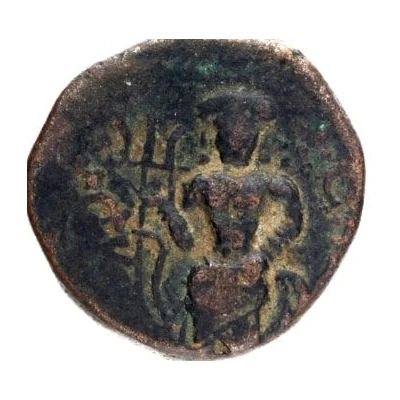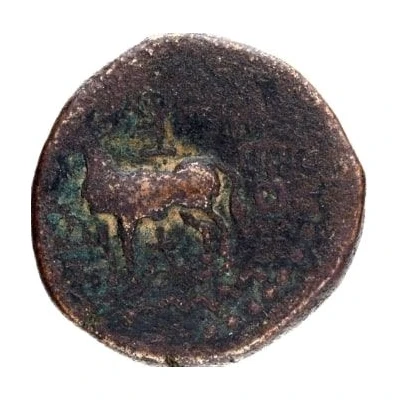


© Marudhar Arts
Lord shiva with trident tetradrachm 200 BC - 100 BC
| Copper | 9 g | - |
| Issuer | Tribal republic of Yaudheya (Punjab region) |
|---|---|
| Type | Standard circulation coin |
| Years | 200 BC - 100 BC |
| Value | Tetradrachm (4) |
| Currency | Drachm (200 BC to 100 BC) |
| Composition | Copper |
| Weight | 9 g |
| Shape | Round (irregular) |
| Technique | Hammered |
| Orientation | Variable alignment ↺ |
| Demonetized | Yes |
| Updated | 2024-10-10 |
| Numista | N#422354 |
|---|---|
| Rarity index | 97% |
Reverse
Horse facing left with lettering around.
Script: Brahmi
Edge
Plain
Comment
Weight is approximate based on other coins and varies significantly, here only as an indication. This coin is a Chitresvara type, and is of the Indo Greek coinage types however the symbols and minting is entirely native and made of copper (a debasement from the earlier silver). The Kuninda Dynasty was an Indian dynasty in north West India from about the 3rd Century BC to the 1st Century BC.
Interesting fact
One interesting fact about this coin is that it features an image of Lord Shiva with a trident, which is a symbol of his power and authority. The trident is also associated with the three aspects of Shiva - creation, preservation, and destruction. This coin is a rare and valuable artifact that provides insight into the cultural and religious beliefs of the Yaudheya tribe in the Punjab region during the 2nd century BC.